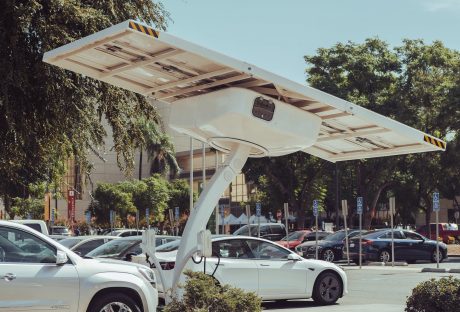The call of the wild, the untamed trails, and the uncharted terrains have beckoned adventure enthusiasts for generations. The allure of the used off-roaders, once the domain of rugged adventurers and thrill-seekers, has become a passion for many.
For those seeking to embark on these exhilarating journeys without breaking the bank, the world of used vehicles opens a gateway to off-road adventures. Whether it’s traversing rocky paths, tackling muddy tracks, or conquering steep inclines, the capabilities of used cars are a tempting prospect for those looking to embrace the off-road experience without a hefty price tag.
The Appeal Of Off-Roading In Used Vehicles
Off-road driving, with its demands on a vehicle’s durability and performance, necessitates a reliable and capable set of wheels. While newer vehicles boast cutting-edge technology designed explicitly for off-road terrains, the market for used cars offers a treasure trove of options. From venerable classics to more recent models, the appeal of used vehicles for off-roading lies in their potential to deliver robust performance at a fraction of the cost of their brand-new counterparts.
Factors To Consider In Choosing Used Off-Roaders
Selecting the ideal used vehicle for off-road escapades demands a comprehensive evaluation of numerous critical factors. Beyond aesthetics, off-road capabilities hinge on a vehicle’s mechanical integrity and specific features that cater to challenging terrains.
Mechanical Condition And History
The foundation of any off-road adventure lies in the reliability of the vehicle. A thorough mechanical inspection is indispensable. Engaging a qualified mechanic or conducting a detailed personal examination can reveal vital information about the vehicle’s health. Assessing the engine’s condition, the functionality of the transmission, the state of the suspension, and the integrity of the four-wheel-drive system is pivotal.
A comprehensive look into the vehicle’s service history unveils essential maintenance patterns, any major repairs or replacements, and the frequency of service. Thus, it’s imperative to review the odometer reading to gauge the extent of wear and tear. It also helps to estimate the remaining lifespan of crucial components.
Off-Road Specific Features
Off-road driving requires specific features that equip vehicles, like used off-roaders, to easily navigate challenging terrains. Ground clearance is pivotal; a higher ground clearance allows the car to negotiate obstacles more effectively. Additionally, robust tires designed for off-road conditions and features such as traction control, differential locks, and specialized off-road driving modes significantly enhance a vehicle’s capability.
The type of drivetrain plays a crucial role. Four-wheel-drive (4WD) or all-wheel-drive (AWD) systems are particularly beneficial for off-roading, offering enhanced traction and maneuverability across different surfaces. A well-maintained 4WD or AWD system can substantially affect the vehicle’s off-road performance.
Modifiability And Aftermarket Support
The potential for modifications and aftermarket support for used SUVs can significantly enhance their capabilities. Some vehicles have a rich aftermarket parts and accessories ecosystem, allowing owners to customize and improve their off-road performance. This can range from suspension upgrades, winches, larger tires, and skid plates to even more complex modifications. The latter include engine enhancements or snorkels for water crossings.
Researching the availability of these aftermarket parts and gauging the modifiability of a vehicle can play a pivotal role in the decision-making process. Especially for enthusiasts keen on tailoring their off-road vehicles to suit their specific needs.
Budget And Overall Investment
While the cost of a used vehicle is often significantly lower than a new one, it’s essential to consider the total investment required. Beyond the purchase price, factor in potential repairs, upgrades, maintenance, and insurance costs. Balancing the initial price with potential additional investments needed for desired modifications is crucial for comprehensively evaluating the vehicle’s affordability.
Popular Used Off-Roaders And Their Capabilities
Numerous vehicles in the used market have earned acclaim for their off-road prowess. The Jeep Wrangler, revered for its legendary off-road capabilities, remains a top choice for enthusiasts. Moreover, its rugged design, solid axle configuration, and iconic four-wheel-drive system make it an enduring favorite for off-road enthusiasts.
Additionally, the Toyota 4Runner, known for its reliability and adaptability, stands out as a robust off-road option. Its strong build, ample ground clearance, and sophisticated off-road features make it a compelling choice for tackling diverse terrains.
Furthermore, the Nissan Xterra, with its sturdy construction and off-road-oriented features, and the venerable Land Rover Defender, a timeless icon in the off-road realm, also stand out as noteworthy options in the used vehicle market.
The Thrill Of Off-Road Adventures
With their unpredictability and challenges, off-road adventures offer an exhilarating escape from the ordinary. The joy of conquering rugged trails, fording streams, as well as scaling steep hills encapsulates the essence of off-roading. Used vehicles equipped with the right capabilities and spirit provide a means to partake in these thrilling escapades without the hefty investment required for a brand-new off-road vehicle.
The Bottom Line
Off-road exploration, once an exclusive domain, has now opened its doors to enthusiasts through the spectrum of used vehicles. The cost-effectiveness and potential for adventure that used off-roaders offer make them an enticing prospect for those seeking to embrace the thrill of off-road expeditions. With the right choice and a spirit for adventure, the world of off-roading in used vehicles beckons. It is a gateway to thrilling journeys off the beaten path.
Read Also:






















